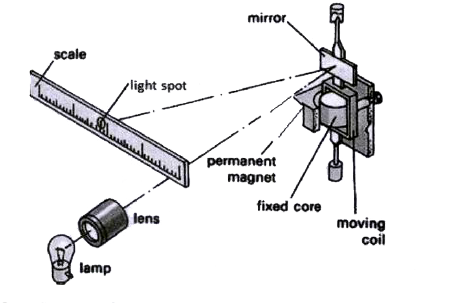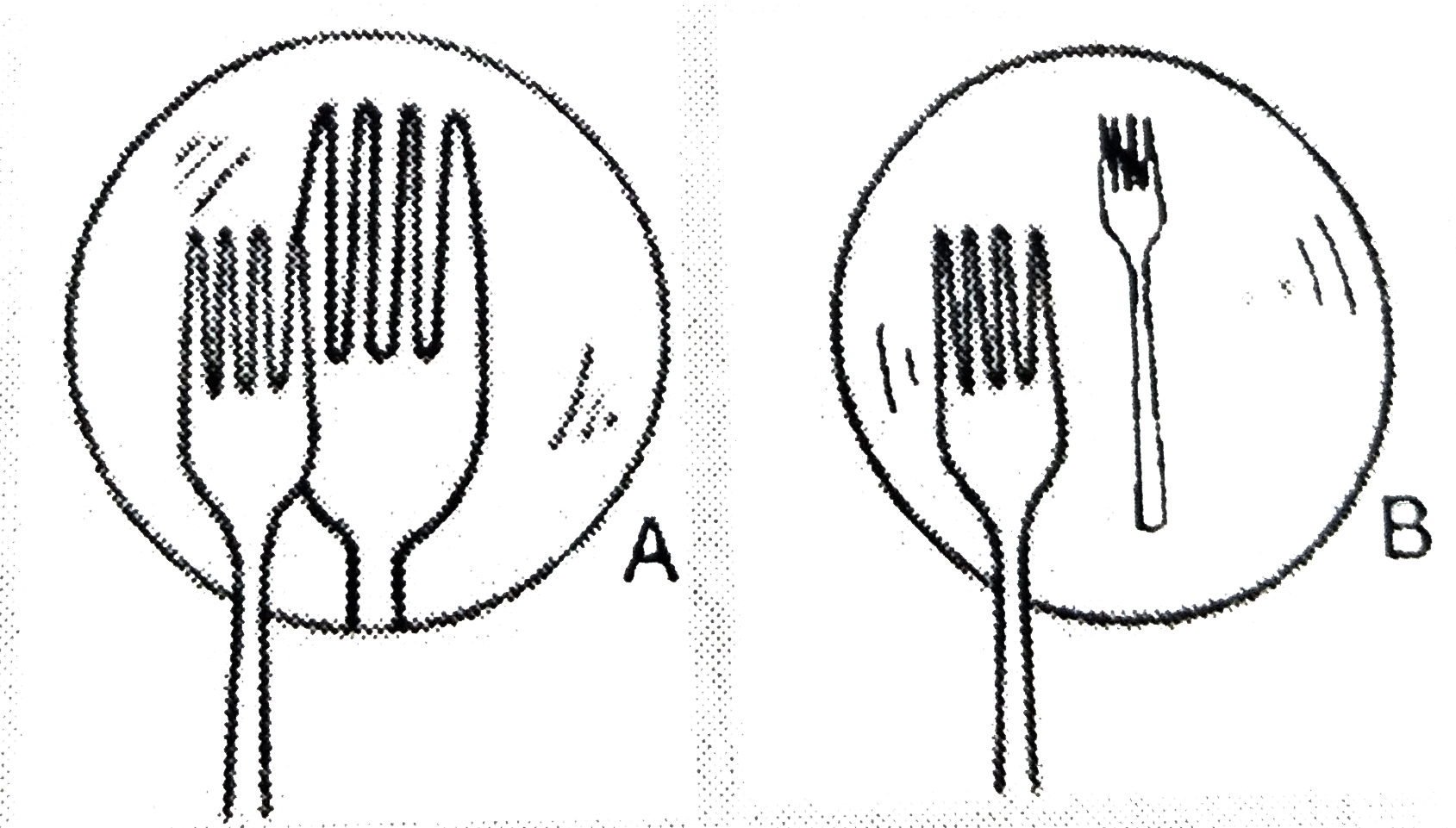When an empty spray pump is taken and air is blown on a clean mirror , the mirror remains clean. If we gently blow out air form lungus on the same mirror , the mirror misty . Give reason.
Exhaled air contains greater amount of water vapour than the normal air. When this air comes in contact with the surface of the mirror, it condenses to form tiny water droplets and gives the appearance of mist. As a result, the mirror surface turns misty.
Topper's Solved these Questions
- AMAZING AIRBook:PEARSON IIT JEE FOUNDATIONChapter:AMAZING AIRExercise:Test Your Concepts (Very Short Answer) Fill in the blanks
Explore 9 Videos
- AMAZING AIRBook:PEARSON IIT JEE FOUNDATIONChapter:AMAZING AIRExercise:Test Your Concepts (Very Short Answer) Select the correct alternative from the given options
Explore 11 Videos
- LANGUAGE OF CHEMISTRY AND CHANGES AROUND US Book:PEARSON IIT JEE FOUNDATIONChapter:LANGUAGE OF CHEMISTRY AND CHANGES AROUND US Exercise:ASSESSMENT TEST (TEST 1)
Explore 13 Videos
Similar Questions
Knowledge Check
When an object is at .distances of μ1 and μ2 from the poles of a concave mirror, images of the same size are formed. The - focal length, of the mirror is
A∣μ1+μ2|B|μ2+μ1|C|μ1+μ22|D|μ1−μ22|II. Read the following text and answer the following questions on the basis of the same:
Galvanometer can sense/measure current. Improved mirror galvanometer was developed by William Thomson, later to become Lord Kelvin, in 1858. Thomson intended the instrument to read weak signal currents on very long submarine telegraph cables.
The fundamental problems of transmitting/receiving a singnal through a lengthy submarine cable was that the electrical current tended to be very low (as littles as 1/100,000th of a stadard light bulb). So, it was very difficult to detect it. To solve the problem it was thought that larger amount of electric current would be sent through the line. But Thomson had a different approach. He thought the best response was to devise a device that could read faint signals. The galvanometer, first invented in 1802, was a mean of detecting electric current. It consisted of a needle that was deflected by the magnetic field created by the electric current. But the galvanometers of the day could't detect the weak signals that came through a long underwater cable. But the improved version of galvanometer was highly sensitive to detect the lowest current. The mirror galvanometer consists of a long fine coil of silk-covered copper wire. In the heart of that coil, within a little air-chamber, a small round mirror is hung by a single fibre of floss silk, with four tiny magnets cemented to its back.
A beam of light is thrown from a lamp upon the mirror, and reflected by it upon a white screen or scale a few feet distant, where it forms a bright spot of light, when there is no current on the instrument, the spot of light remains stationary at the zero position on the screen, but the instant a current traverses the long wire of the coil, the suspended magnets twist themselves horizontally out of their former position, the mirror is inclined with them, and the beam of light is deflected along the screen to one side or the other, according to the nature of the current. If positive electric current gives a deflection to the right of zero, a negative current will give a deflection to the left of zero, and vice versa.
The air in the little chamber surrounding the mirror is compressed, so as to act like a cushion, and deaden the movements of the mirror, the mirror is thus prevented from idly swinging about at each deflections.
Improved mirror galvanometer was developed by
 ALord KelvinBJohann SchweiggerCLuigi GalvaniDAndre-Marie Ampere
ALord KelvinBJohann SchweiggerCLuigi GalvaniDAndre-Marie AmpereII. Read the following text and answer the following questions on the basis of the same:
Galvanometer can sense/measure current. Improved mirror galvanometer was developed by William Thomson, later to become Lord Kelvin, in 1858. Thomson intended the instrument to read weak signal currents on very long submarine telegraph cables.
The fundamental problems of transmitting/receiving a singnal through a lengthy submarine cable was that the electrical current tended to be very low (as littles as 1/100,000th of a stadard light bulb). So, it was very difficult to detect it. To solve the problem it was thought that larger amount of electric current would be sent through the line. But Thomson had a different approach. He thought the best response was to devise a device that could read faint signals. The galvanometer, first invented in 1802, was a mean of detecting electric current. It consisted of a needle that was deflected by the magnetic field created by the electric current. But the galvanometers of the day could't detect the weak signals that came through a long underwater cable. But the improved version of galvanometer was highly sensitive to detect the lowest current. The mirror galvanometer consists of a long fine coil of silk-covered copper wire. In the heart of that coil, within a little air-chamber, a small round mirror is hung by a single fibre of floss silk, with four tiny magnets cemented to its back.
A beam of light is thrown from a lamp upon the mirror, and reflected by it upon a white screen or scale a few feet distant, where it forms a bright spot of light, when there is no current on the instrument, the spot of light remains stationary at the zero position on the screen, but the instant a current traverses the long wire of the coil, the suspended magnets twist themselves horizontally out of their former position, the mirror is inclined with them, and the beam of light is deflected along the screen to one side or the other, according to the nature of the current. If positive electric current gives a deflection to the right of zero, a negative current will give a deflection to the left of zero, and vice versa.
The air in the little chamber surrounding the mirror is compressed, so as to act like a cushion, and deaden the movements of the mirror, the mirror is thus prevented from idly swinging about at each deflections.
Mirror galvanometer galvabometer was primarily used to
 Ameasure the current passing through electric bulb.Bmeasure the weak current received through lengthy submarine cable.Cmeasure current passing through human body.Dall of these.
Ameasure the current passing through electric bulb.Bmeasure the weak current received through lengthy submarine cable.Cmeasure current passing through human body.Dall of these.
For the determining focal length of a concave mirror, a teacher asks her students to identify concave mirror from a few mirrors lying on the table. The reason given by A, B, and D for picking up the right mirror is as follows:
A: the mirror is depressed at the center and self image formed is enlarged and erect.
B: the mirror is raised at the center and self image formed is smaller and erect.
C: the mirror is plane all over and self image is of same size.
D: the mirror is depressed at the center and self image formed is enlarged and inverted.
Which reason is correct? Justify your answer.
View SolutionFor the determining focal length of a concave mirror, a teacher asks her students to identify concave mirror from a few mirrors lying on the table. The reason given by A, B, and D for picking up the right mirror is as follows:
A: the mirror is depressed at the center and self image formed is enlarged and erect.
B: the mirror is raised at the center and self image formed is smaller and erect.
C: the mirror is plane all over and self image is of same size.
D: the mirror is depressed at the center and self image formed is enlarged and inverted.
Which reason is correct? Justify your answer.
View SolutionThe diagrams show the appearance of a fork when placed in front of and closed to two mirrors A and B, turn by turn.
(a) Which mirror is convex ?
(b) Which mirror is concave ?
Give reasons for your choice.

View SolutionTwo big mirrors A and B are fitted side by side on a wall. A man is standing at such a distance from the wall that he can see the erect image of his face in both the mirrors. When the man starts walking towards the mirrors, he finds that the size of his face in mirror A goes on increasing but that in mirror B remains the same. Then,
View SolutionA concave mirror and a convex lens are of the same focal length in air. When they are immersed in water
View Solution
